If you want to learn to draw realistically, 3-D shapes are a foundation for doing so. Once you know how to imply multi-dimensional form, you can apply your knowledge to all types of subjects.
Learn how to draw 3-D shapes and make your art pop off the page.

You don’t need any special tools to learn this skill. I’m using a pencil and paper, but feel free to use pens, colored pencils, crayons — whatever strikes your fancy.
Here are drawing tutorials for five common 3-D shapes with some helpful tips and tricks for drawing them. Each is broken down into simple steps that helps build the overall form.
1. How to draw 3-D triangles
There are two types of multi-dimensional triangles: prisms (left) and pyramids (right).

Step 1:
When drawing a prism, start with a simple, flat triangle and small horizon point that’s at the side of the shape. It doesn’t matter which side you chose. Where you place the horizon point determines the length and angle of your prism.
To create a pyramid, draw three lines, as shown on the right above. In the center should be a straight line. From the top of the straight line, draw two angled lines that are the same length. It’s OK if the angles aren’t exactly identical.
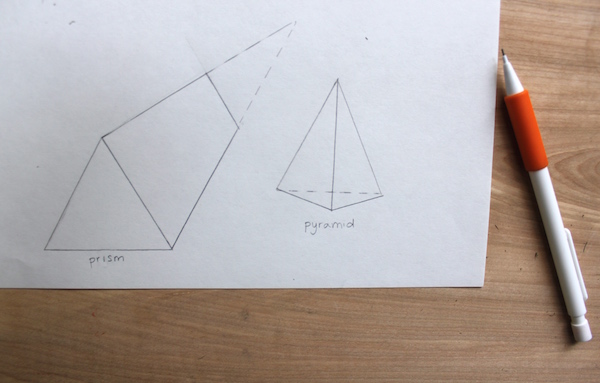
Step 2:
Give your prism a 3-D appearance by drawing two lines: one off the top corner and one off the base corner of the triangle that’s closer to the horizon point. Draw the lines lightly all the way to the horizon point. Then, close it off with a single line that’s the same angle as the nearest side of the triangle. Erase the lines extending to the horizon point.
For the pyramid, you’ll finish the drawing by connecting the three lines at the bottom. Draw a dotted horizontal line to connect the two angled lines, and use angled lines to connect each angled line to the center line.
2. How to draw cubes
Cubes can be drawn in multiple ways, and here, I’ve created two.
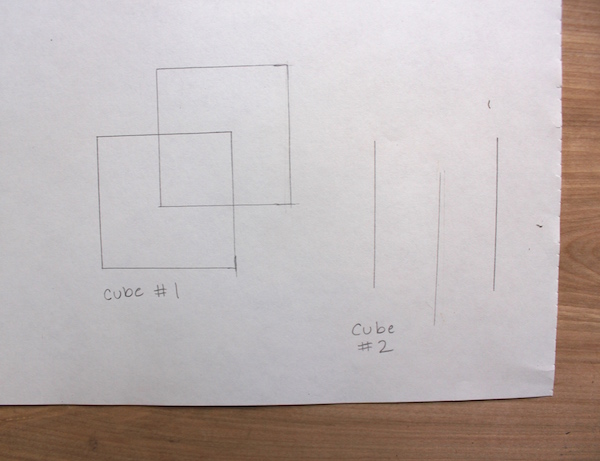
Step 1:
To start the first cube, draw two squares that are the same size. They need to overlap, but how much is up to you.
Draw the second cube much like you did the pyramid. This time, you’ll make three parallel vertical lines of the same size. The two outer lines should start and end at the same point, and the middle one should be shifted down a bit on the page.

Step 2:
Now it’s all about connecting corners. On the first cube, use a straight edge to draw angled lines to match the corresponding edges. So you’ll connect the bottom right corner of the first square to the bottom right corner of the second square. Repeat this will all four corner.
For the second cube, connect the top points of the three lines with angled lines; repeat with the bottom points. Draw a point directly above the center line — the distance between the top of the center line and the point should be about the length of the center line. Connect the tops of the outer two lines to the point with angled lines.
3. How to draw a cylinder
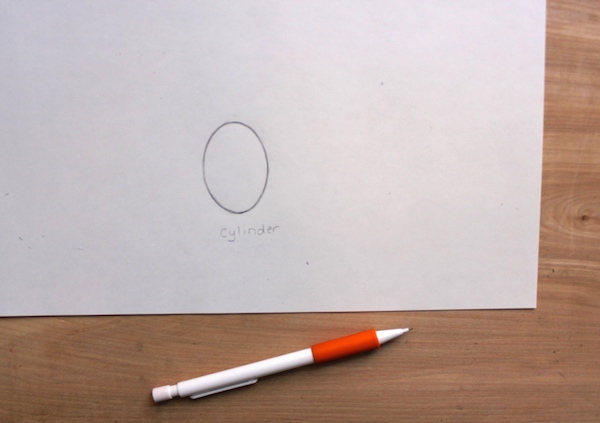
Step 1:
Start with an oval. Don’t worry if you can’t draw one perfectly right away — I had to redo mine many times! You could trace something, as well.
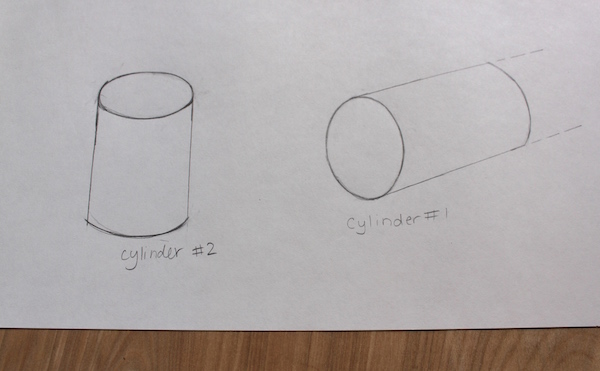
Step 2:
After you have the oval down, draw two straight, perpendicular lines that come from either end. These lines can be as long as you want and can go in any direction.
Step 3:
Connect the straight lines with a curved line that mimics the roundness of the oval.
Tip: To make sure the bottom and top of your cylinder match, try turning the paper upside down. It’ll change your point of view and any inconsistencies will stand out.
4. How to draw a sphere
There are several ways to draw a sphere, ranging from simple to very complex. No matter how much you want to challenge yourself, a drawing of a sphere will start with a simple circle. Draw one freehand or trace a stencil or household item.
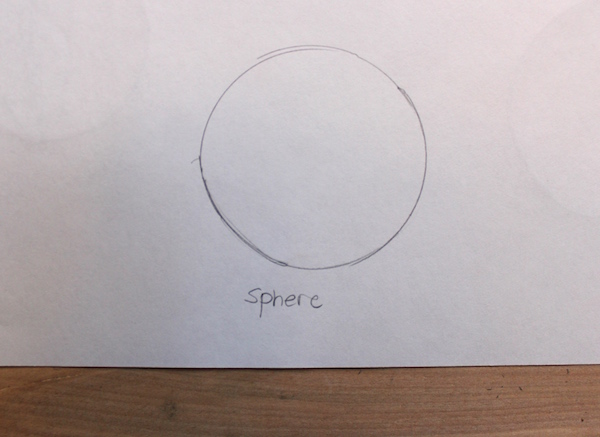
Easier:
There sphere looks best when it has shading, but you can also make it appear 3-D by drawing contour lines from top to bottom. Make sure the curve mimic the curves of the circle, with less exaggeration as you get closer to the middle.

More advanced:
While drawing a realistic sphere is worthy of its own tutorial, I do want to give you one quick and easy way to draw a sphere. This method looks more lifelike than the example above, but it’s also much faster than drawing a very detailed sphere.
If you want to try simple shading, try a gradient from light to dark across the sphere. In this example, the light is coming from the left, so the lightest point is on the left of the sphere and the darkest is on the right. See how it looks more spherical?
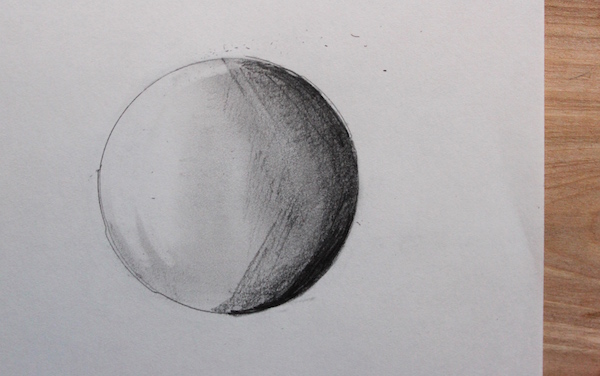
5. How to draw a cone
A cone is a cross between a cylinder and a pyramid. So we’ll take what we know from both to draw this 3-D shape.
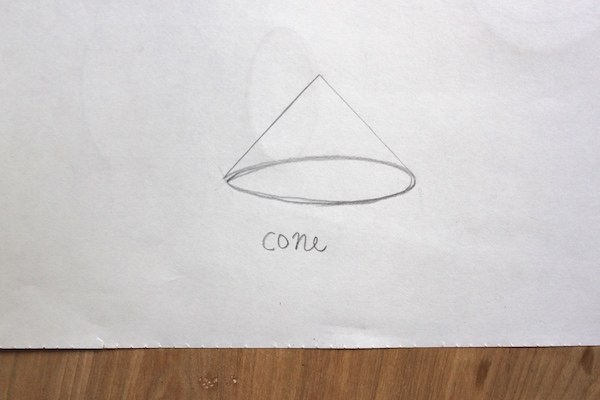
Step 1:
Start with a horizontal oval. It doesn’t have to be perfect.
Step 2:
To finish, draw the two sides of a triangle. The line for each side should start at either edge of the oval and meet in the middle above the center of the oval.
Tips for drawing 3-D shapes
- When trying to draw something 3-D, straight lines are important. Use a straight edge (like a ruler) when you can. Even if you don’t have a ruler, something that’s flat and made out of a sturdy material will do.
- Be aware of the angles of lines. Things like a cube, for instance, require parallel lines to give them their shape. Others, like a cone, can have a variety of angles. Compare angles by holding your pencil up to the lines. If they match, then your lines are probably parallel. If you want to get really technical, you can use a protractor.
- Pencils and erasers are your friend. Whenever possible, draw with pencil to get the angles and lines correct.
Drawing other 3-D shapes
Many objects you draw will fall into one of those five major shape categories. If not, remember to check your angles and make straight lines. I have this ceramic polygon shape that doesn’t really fit as a cube, cone or a prism. Here’s how I made it come to life.
Step 1:
By starting with a straight edge, I was able to make the outline of the shape.
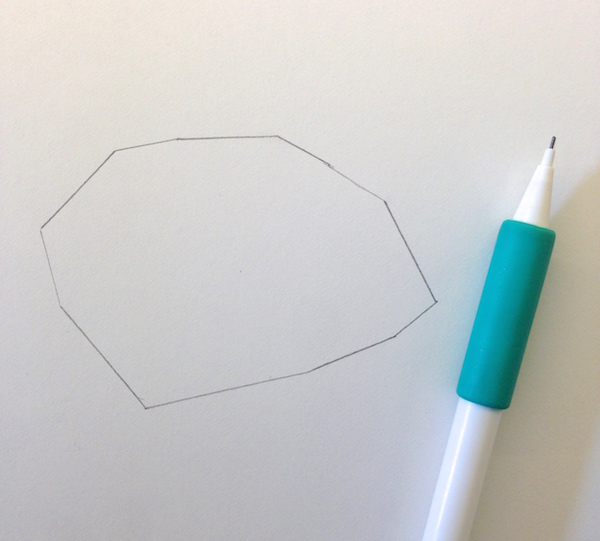
Step 2:
I then drew the inside of the shape to convey its multi-dimensional feel. Comparing angles — from the object itself — helped me when drawing. I still had to go back and fix some lines, though.
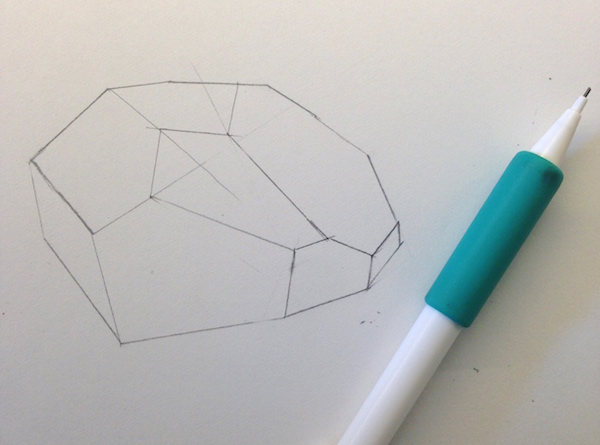
Step 3:
To give the shape even more presence, I shaded parts of it based on the angle of light. This conveys the different surface planes and sense of form. Shading is a complex subject that we don’t have time to cover in this post, but you can learn more about it in the Craftsy class 10 Essential Techniques for Better Drawing.


its seem so easy to make 3 dimension with your application.
I want to be a better drawer